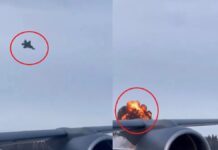NASA’s Rover Perseverance has recorded the sound of the winds on Mars. He has sent audio of these winds to NASA.
New Delhi. In search of life on Mars, the American Space Agency NASA (Nasa) sent research researcher (Rover Perseverance) is doing many research there. This includes the investigation of the soil from there to the atmosphere there. In the meantime, Rover Perseverance has recorded the sound of winds running on Mars for the first time. He has sent audio of these winds to NASA.
Audio sent by Rover Perseverance can be heard how strong winds are going on Mars. The sound of the air there also looks exactly like it happens during a typhoon on the earth. NASA has shared this on Twitter. NASA has informed that this voice has been recorded with the Supercam microphone installed in the Rover Perception. It is mounted on the mast of the rover.
🔊 You’re listening to the first audio recordings of laser strikes on Mars. These rhythmic tapping sounds heard by the microphone on my SuperCam instrument have different intensities that can help my team figure out the structure of the rocks around me. https://t.co/nfWyOyfhNy
— NASA’s Perseverance Mars Rover (@NASAPersevere) March 10, 2021
A second audio message has also been sent by the rover. It is of laser strokes over there. It has also been heard for the first time. This voice is the same as the heart beats. Through this, the NASA team can find out how the rocks around the rover are shaped.
Things are sounding really good here. Listen to the first sounds of wind captured by my SuperCam microphone. This mic is located at the top of my mast. For this recording, my mast was still down so the sound is a bit muffled. https://t.co/0KpN30oIro
— NASA’s Perseverance Mars Rover (@NASAPersevere) March 10, 2021
Please tell that NASA’s Rover Perseverance started its campaign on March 6 as a test for the first time on the red planet. A distance of about 6.5 meters was covered in it. This was a major achievement before his science work started.
On March 6, NASA reported that the expedition lasted for about 33 minutes, with the rover moving four meters, where it then turned 150 degrees to the left and 2.5 meters behind to reach its new temporary parking space.











